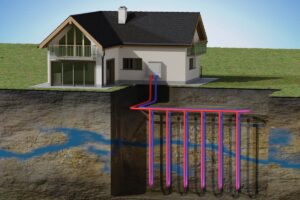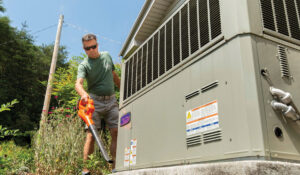Dear Pat: Our energy bills seem high, but I’m not sure where to start looking around my home for opportunities to save energy. Do you have any suggestions? – Les
Dear Les: That’s a great question. There are many products and services that claim to provide maximum energy efficiency, so it can be challenging to know where to start. Fortunately, our monthly bills can help identify areas for the most energy savings.
For most homes, the months requiring the most energy use are in the winter and summer when temperatures are most extreme. Total up your average energy use for the months you use the most energy, then subtract the average amount you use during “shoulder months,” when you’re barely using your heating or cooling system.
The likely reason for the difference in energy use is heating and cooling your home. If someone says switching to a new heating or cooling system could save 20 percent, they likely mean you can save 20 percent on heating or cooling costs, which are a portion of your overall energy costs.
Every home is different. For example, a small percentage of homes include uncommon energy uses like a well pump, pool or a home business that requires more energy than heating or cooling. Typically, heating and cooling by far use the largest amount of energy.
Sealing air leaks is often the least expensive energy-saving measure that delivers the most bang for your buck. The second most cost-effective way to cut heating and cooling costs depends on your situation.
If you have an older propane or oil furnace, replacing it with an energy efficient heat pump might be your best investment. If you already have a relatively efficient furnace or air conditioning unit, insulating your attic could be the next most cost-effective measure, followed by insulating exterior walls, crawl space or basement.
Replacing windows is a high-priority project for many homeowners, and new windows can certainly add value to your home. However, this can be costly, making it difficult to justify solely based on potential energy savings. If your windows are old and leaky, it could be worth the investment. Do your research upfront so you fully understand the costs of the project.
After you’ve found ways to reduce your heating and cooling costs, your next largest energy use is likely water heating. A few low-cost measures like repairing leaky faucets and insulating the first 6 to 10 feet of hot water line could deliver significant savings. Installing energy efficient showerheads can save water and reduce energy use. Check out Consumer Reports for reliable comparisons and reviews of energy efficient showerheads.
If your water heater is more than 10 years old, it’s likely time to consider how and when to replace it. You can purchase a traditional water heater that uses the same fuel you’re using now. Other options include heat pump, tankless and even solar water heaters. Be sure to research before your water heater breaks so you know your options.
Appliances and lighting account for a smaller portion of your energy use. As you replace older appliances and lighting, look for options that include the ENERGY STAR sticker. Also review energy use information found on the EnergyGuide label.
I hope this information will help you identify areas to save energy at home. Consider enlisting the help of an energy auditor who can provide an assessment of your home’s efficiency.









